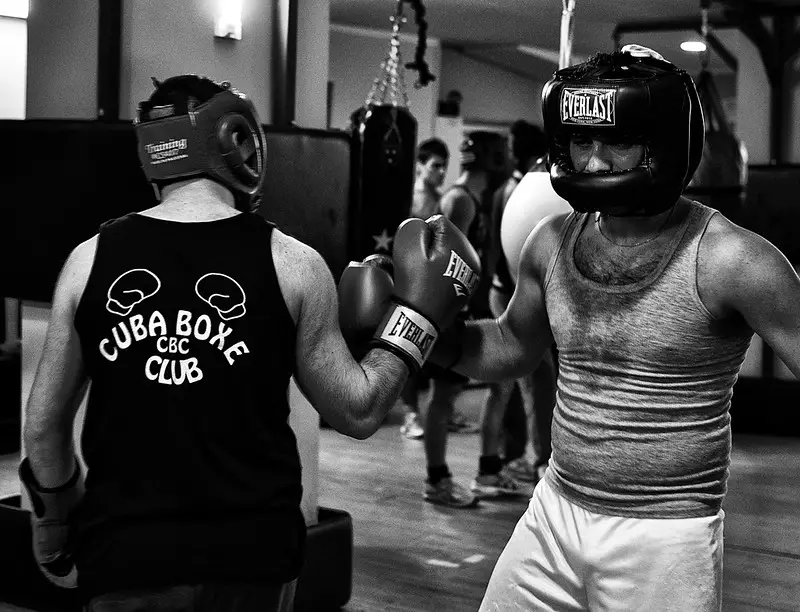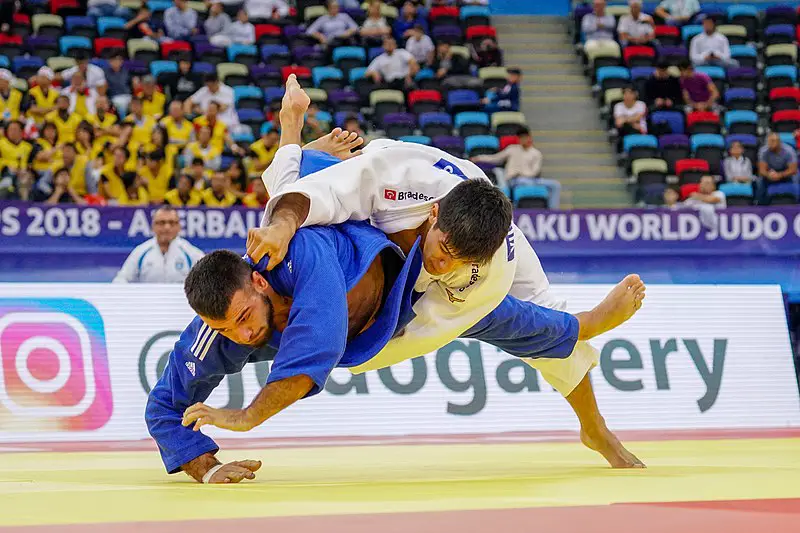Whether you’re looking to get in shape, learn self-defense, or find a new hobby, understanding the best fighting martial arts can help you make an informed decision.
In this article, we’ll explore the top martial arts disciplines, highlighting their unique techniques, benefits, and what sets them apart from one another.
1. Muay Thai: The Art of Eight Limbs
Muay Thai, originating from Thailand, stands out as one of the best fighting martial arts due to its comprehensive striking techniques. Known as the “Art of Eight Limbs,” Muay Thai incorporates punches, kicks, elbows, and knee strikes.
This multifaceted approach makes it extremely effective in close-quarters combat.
- Kicks — generate tremendous power from the hips, making them effective at targeting an opponent’s legs, body, or head.
- Knee — strikes are delivered in close range, often during clinching, and can be aimed at the torso, thighs, or even the head.
- Elbow strikes – which are sharp and powerful, can cut an opponent and cause significant damage when thrown from various angles, adding a deadly edge to the striking arsenal.
- Punches – are integrated with kicks and other strikes to create a seamless flow of attacks.
- Clinching — involves controlling an opponent’s posture by holding their head and neck, allowing for powerful knee and elbow strikes while disrupting their balance.
Muay Thai students experience numerous physical and mental benefits. The sport is highly aerobic, which improves heart health and stamina. The rigorous training regimen, including bag work, pad work, and bodyweight exercises, builds muscular strength and endurance and makes you athletic.
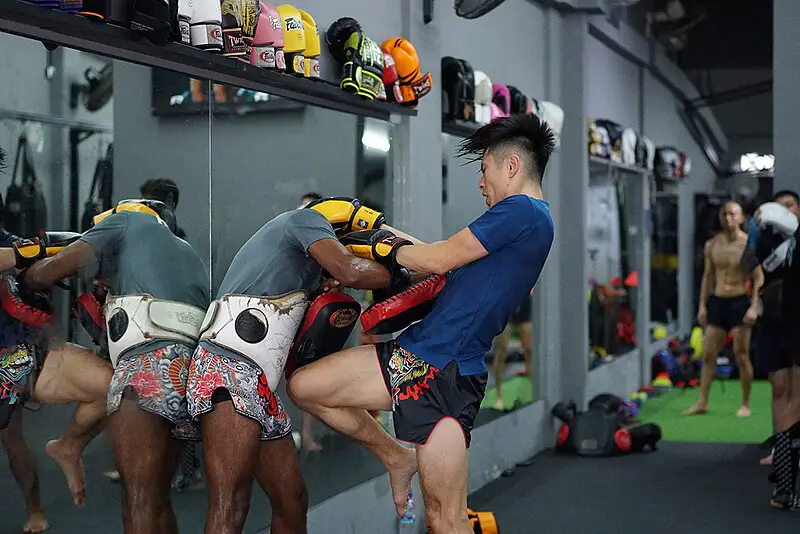
The rigorous training regimen, including bag work, pad work, and bodyweight exercises, builds muscular strength and endurance. Next, the diverse range of movements enhances coordination and agility, making practitioners more athletic and responsive.
But above all, Muay Thai is one of the most effective self-defense martial arts, very popular across the world.
2. Mixed Martial Arts (MMA)
MMA is one of the best fighting martial arts because it combines techniques from various disciplines, making practitioners well-rounded fighters.
It incorporates striking from boxing and Muay Thai, grappling from wrestling and Brazilian Jiu-Jitsu, and ground control from judo and sambo. This versatility ensures that fighters can adapt to any combat situation, whether standing or on the ground.
Moreover, MMA’s emphasis on real-world application sets it apart. Unlike traditional martial arts that focus on forms and rituals, MMA training prioritizes practical effectiveness in live scenarios.
Fighters regularly spar and compete, testing their skills against diverse opponents. This continuous, real-time feedback loop accelerates improvement and adaptability.
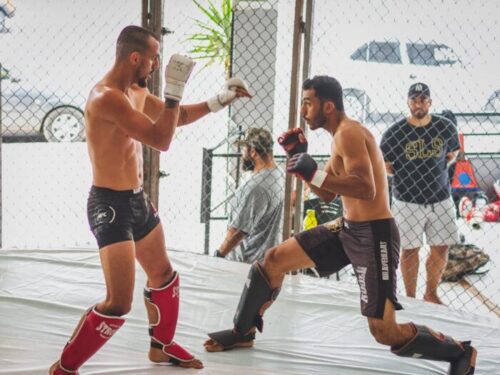
Additionally, MMA’s rigorous physical conditioning builds unparalleled strength, endurance, and agility. The sport’s demanding nature ensures that practitioners are not only skilled in technique but also peak athletes capable of sustaining high-intensity performance.
Yes, it is hard and dangerous. But, it is probably the most effective martial arts in terms of self-defense and real world fighting.
3. Brazilian Jiu-Jitsu: The Gentle Art
Brazilian Jiu-Jitsu (BJJ) focuses on ground fighting and submission holds. There is no striking as the entire emphasis is on grappling. Though it may sound limited, BJJ is actually among the best fighting martial arts.
Developed in Brazil, the concept emphasizes technique over brute strength, allowing smaller individuals to defeat larger opponents.
BJJ techniques include joint locks, chokeholds, and positional control. The guard position, a hallmark of BJJ, allows fighters to defend from their backs. Each technique works in real life, and can help you get out of trouble in a self-defense situation.
It teaches you how to quickly take the opponent down using takedowns, trips and throws, and subdue them with pins, locks and chokehold.
Training is fun, dynamic, playful, and due to the lack of strike, safe. In fact, BJJ is among the safest martial arts you can train in which makes it very popular among people of all ages, including the kids and elderly.
3. Boxing: The Sweet Science
Boxing, often referred to as “The Sweet Science,” focuses on striking with the fists. It’s among the best fighting martial arts due to its realistic training approach, and of course, effective punching techniques.
People love it as boxing is not technically demanding (on the amateur level), and everyone can learn it regardless of talent. Also, training is cardio-intense and an ideal mix of aerobic and anaerobic conditioning. This helps an individual develop functional strength and get in top shape in a short period of time.
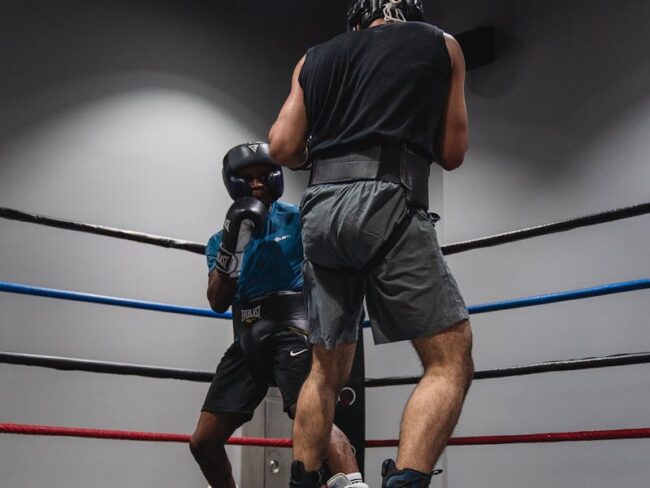
Boxing techniques focus on precise, powerful strikes and effective defense.
- Key punches include: the jab, a quick, straight punch used for distancing and setup; the cross, a powerful straight punch from the rear hand; the hook, a sideways punch targeting the head or body; and the uppercut, an upward punch aimed at the chin.
- Defensive maneuvers such as slipping (dodging punches by moving the head), bobbing and weaving (ducking under punches), and blocking (using the arms to shield against blows) are crucial.
Footwork, including pivoting and shuffling, enhances mobility and positioning, making boxing a dynamic and strategic martial art.
Boxing’s emphasis on footwork and head movement makes it distinct, teaching practitioners how to move efficiently and avoid strikes.
4. Krav Maga: Practical Self-Defense
Krav Maga, developed by the Israeli military, stands out as one of the best fighting martial arts for self-defense. It incorporates techniques from various martial arts to create a practical and effective combat system.
It is a hybrid mix of only the best techniques from different grappling and striking martial arts, as well as military self-defense tactics and methods.
Krav Maga teaches strikes, grappling, and disarmament techniques against weapons. The focus is on neutralizing threats quickly and effectively.
It is an adaptable martial art that focuses entirely on improving an individual’s combat abilities according to their strengths and weaknesses. It’s designed to be accessible to everyone, regardless of size or strength.
5. Combat Sambo
Combat Sambo is one of the best fighting martial arts because it seamlessly blends striking and grappling techniques, making practitioners highly versatile.
It incorporates elements from judo, wrestling, and striking arts, providing a comprehensive skill set for any combat situation. This versatility ensures fighters can effectively engage at any range, whether standing or on the ground.
Training focuses on live sparring and realistic drills, ensuring that techniques are not just theoretical but proven in action. This practical approach enhances a fighter’s ability to respond to unpredictable situations and stay calm under pressure.
Furthermore, Combat Samabo’s emphasis on self-defense makes it highly effective for personal protection. Techniques are designed to neutralize threats quickly and efficiently, making it practical for both sport and real-life encounters.
Apart from conventional martial arts moves, students learn different weapon-based tactics, as well as dirty moves that are brutal but effective.
6. Judo: The Gentle Way
Judo, originating from Japan, emphasizes throws and grappling techniques. It is similar to BJJ but focuses more on standup grappling using powerful trips and throws. The ground aspect is similar but limited.
As one of the best fighting martial arts, Judo focuses on using an opponent’s energy against them.
Judo techniques focus on throws, pins, and joint locks. These techniques emphasize timing, leverage, and control, making Judo a highly effective martial art. Here is a list of some of the most common moves:
Throws (Nage-waza)
- Hip Throw (O-goshi): A fundamental throw where the practitioner uses their hip to lift and throw the opponent over.
- Shoulder Throw (Seoi-nage): Involves gripping the opponent’s arm and using the shoulder as a pivot point to throw them forward.
- Foot Sweep (De-ashi-barai): A sweeping action using the foot to off-balance and topple the opponent.
Pins (Osaekomi-waza)
- Side Control (Kesa-gatame): Immobilizes the opponent on their back by wrapping an arm around their neck and securing their arm.
- Full Mount (Tate-shiho-gatame): The practitioner sits on the opponent’s chest, controlling their upper body and restricting movement.
Joint Locks (Kansetsu-waza)
- Armbar (Ude-hishigi-juji-gatame): Hyperextends the opponent’s arm at the elbow joint to force submission.
- Kimura (Ude-garami): A shoulder lock that applies pressure on the shoulder joint, using a figure-four grip.
- Straight Armlock (Ude-gatame): Applies pressure on the opponent’s straightened arm to force submission.
Judo’s comprehensive approach to grappling and control makes it effective for both self-defense and competitive sports. Practicing these techniques improves physical strength, balance, and coordination.
Judo also teaches discipline, respect, and strategic thinking, making it a holistic martial art that benefits both the body and mind.
7. Karate: The Way of the Empty Hand
Karate, a martial art from Okinawa, Japan, is one of the most well-known and best fighting martial arts. It focuses on striking techniques and kata (forms) to develop precision and power.
Karate techniques focus on powerful strikes and precision. Key techniques include punches like the straight punch (Oi-zuki) and uppercut (Age-zuki), as well as kicks such as the front kick (Mae-geri) and roundhouse kick (Mawashi-geri).
Practitioners also use elbow strikes (Empi) and knee strikes (Hiza-geri). Blocks, such as the rising block (Age-uke) and downward block (Gedan-barai), protect against attacks.
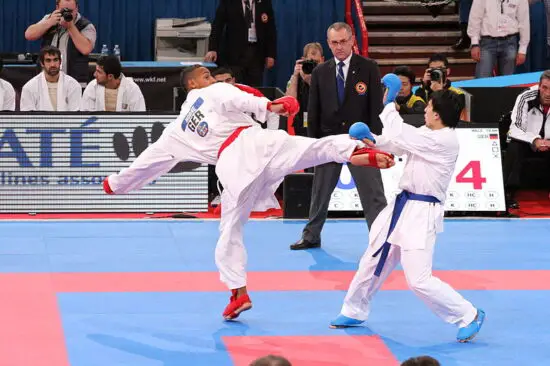
On top of that, karate training includes kata, structured forms that help practitioners perfect their movements. Emphasis on proper stance and hip rotation ensures maximum power and efficiency in each technique.
Although there is sparring, it’s not as intense or realistic as in other martial arts. The emphasis is on preparing for the point-fighting system which favours technique and high precision striking over power and damage.
Final Thoughts On Best Fighting Martial Arts
Choosing the best fighting martial arts depends on your personal goals, area you live in, age, and many other factors. However, this comprehensive list gave you solid options you can choose between and find the one that fits you the best.
The list includes the best and most effective striking, grappling and hybrid martial arts there are. But remember. Whether you’re stepping into the ring, defending yourself, or embarking on a journey of self-discovery, martial arts offer invaluable skills and benefits that can last a lifetime.

